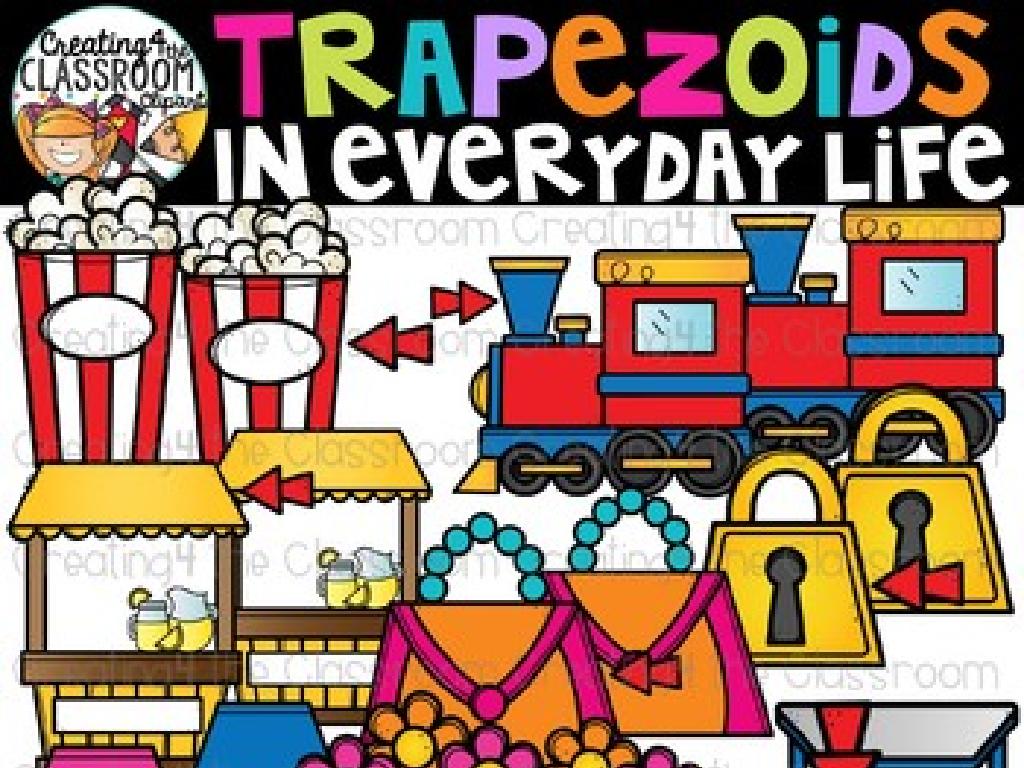Causes Of The Civil War: Missouri Compromise To Bleeding Kansas
Subject: Social studies
Grade: Eighth grade
Topic: The Antebellum Period
Please LOG IN to download the presentation. Access is available to registered users only.
View More Content
Understanding the Antebellum Period
– Define the Antebellum Period
– Time before the Civil War, marked by rising tensions
– Missouri Compromise to Bleeding Kansas
– Key events that increased division between North and South
– Significance of Civil War causes
– Learning about causes helps understand the war’s inevitability
– Reflect on historical impacts
– Consider how these events still influence America today
|
The Antebellum Period refers to the years before the American Civil War, characterized by the growing divide over issues such as slavery and states’ rights. This slide introduces students to the critical events from the Missouri Compromise to Bleeding Kansas, which exemplify the escalating conflict that led to war. Understanding these causes is crucial for students to grasp the complexity of the war and its deep-rooted impact on American society. Encourage students to think critically about how historical events shape the present and to discuss the long-term effects of the Antebellum Period on today’s political and social landscape.
The Missouri Compromise of 1820
– Definition of the Missouri Compromise
– An agreement passed in 1820 admitting Missouri as a slave state and Maine as a free state to maintain a balance in Congress.
– Balance of Free vs. Slave States
– It aimed to maintain equal power between free and slave states in the government.
– National Impact of the Compromise
– The compromise temporarily eased tensions between the North and South but highlighted the growing division over slavery.
|
The Missouri Compromise was a significant event in the lead-up to the Civil War. It was an early attempt to deal with the contentious issue of slavery as the nation expanded. By admitting Missouri as a slave state and Maine as a free state, the compromise maintained an even number of slave and free states, preserving a delicate balance in the Senate. This session should explore the reasons behind the compromise, its short-term effects in reducing sectional conflict, and its long-term impact on the nation, which included setting a precedent for future states’ admissions and contributing to the regional tensions that would eventually lead to the Civil War. Discuss the implications of the compromise on the political, social, and economic fabric of the nation.
The Compromise of 1850: Tensions Rise
– Key provisions of the Compromise
– Included CA as free state, new Fugitive Slave Law, and ended slave trade in DC
– Impact of the Fugitive Slave Act
– Required return of escaped slaves; stirred abolitionist opposition and conflict
– California enters as a free state
– Tipped balance in Senate towards free states, angered Southern states
– Balancing free and slave states
|
The Compromise of 1850 was a series of laws passed to quell the growing tensions between free and slave states. Key provisions aimed to balance the interests of both sides, but also introduced the controversial Fugitive Slave Act, which mandated that escaped slaves be returned to their owners and penalized those who aided them. This act intensified the abolitionist movement and increased sectional conflict. California’s admission as a free state shifted the power in the Senate, causing further discontent among Southern states. This slide will explore these elements and their significant impact on the road to the Civil War. Encourage students to consider how each provision might have felt like a victory or a defeat for different groups at the time.
The Kansas-Nebraska Act of 1854
– Introduction to the Kansas-Nebraska Act
– A law that created Kansas and Nebraska territories with a choice on slavery
– ‘Popular Sovereignty’ explained
– Meant territories decided on slavery by vote, not Congress
– Act’s role in rising tensions
– Led to pro- and anti-slavery settlers rushing into Kansas
– Prelude to Bleeding Kansas
– Resulted in violent confrontations known as Bleeding Kansas
|
The Kansas-Nebraska Act was a pivotal piece of legislation that further strained the relations between the North and South. By allowing the new territories of Kansas and Nebraska to choose whether to allow slavery through ‘Popular Sovereignty,’ it effectively nullified the Missouri Compromise, which had prohibited slavery in that region. This led to a rush of both pro-slavery and anti-slavery settlers into Kansas, trying to influence the vote, which escalated into violent conflicts. These events were a clear indication of the increasing sectionalism and served as a direct precursor to the Civil War. Instruct students to consider how this act might have felt like a betrayal to those against the expansion of slavery and an opportunity for those supporting it. Discuss the concept of ‘Popular Sovereignty’ and its implications on the political and social climate of the time.
Bleeding Kansas: Prelude to Civil War
– ‘Bleeding Kansas’ explained
– A series of violent events involving anti-slavery and pro-slavery settlers in Kansas Territory, 1854-1859.
– Significance of violent confrontations
– Clashes symbolized the sectional conflict and acted as a microcosm of the national debate over slavery.
– ‘Bleeding Kansas’ in the Civil War context
– ‘Bleeding Kansas’ heightened the rift between North and South, setting the stage for the Civil War.
– Impact on national tensions
– These events escalated the debate over states’ rights and federal power, intensifying the divide.
|
Bleeding Kansas refers to the period of violence during the settling of the Kansas territory, where pro-slavery and anti-slavery factions fought, symbolizing the national conflict over slavery. This slide will discuss the origins of ‘Bleeding Kansas’, the significance of the violent confrontations, and how these events contributed to the increasing tensions that eventually led to the Civil War. Emphasize the role of ‘Bleeding Kansas’ as a catalyst in the national debate over slavery and states’ rights, and how it brought the issues to a head, making it a critical point in the road to the Civil War. Encourage students to consider how regional disagreements can escalate into national conflicts.
The Dred Scott Decision: A Nation Divided
– Dred Scott’s identity and case
– Enslaved African American who sued for his freedom
– Supreme Court’s ruling impact
– The court denied Scott’s freedom, ruling that no person of African ancestry could claim U.S. citizenship
– National reaction to the decision
– The decision was met with outrage in the North and approval in the South
– Escalation of sectional tensions
– The ruling deepened the divide between the North and South, inching closer to war
|
Dred Scott was an enslaved man who sought freedom through the American legal system, leading to a landmark Supreme Court case. The Court’s decision in 1857 stated that African Americans, whether enslaved or free, could not be American citizens and therefore had no right to sue in federal court. This decision had a profound impact on the nation, causing widespread controversy and exacerbating sectional tensions between the North and South. It is crucial to discuss the differing reactions and how this decision contributed to the growing animosity that would eventually lead to the Civil War. Encourage students to consider the implications of the ruling on the national mood and the rights of individuals living in America at the time.
The Role of Abolitionism in the Civil War
– Key abolitionist movement figures
– Leaders like Harriet Tubman, Frederick Douglass
– Abolitionism’s push towards war
– Abolitionist activism intensified national tensions
– Literature’s impact on opinion
– ‘Uncle Tom’s Cabin’ shifted views on slavery
– Speeches swaying public views
– Douglass, Garrison speeches rallied support
|
This slide aims to highlight the significant impact of the abolitionist movement on the road to the Civil War. Key figures such as Harriet Tubman and Frederick Douglass played pivotal roles in advocating for the end of slavery. Abolitionism, as a moral and political campaign, heightened the discord between the North and South, contributing to the outbreak of war. Literature like Harriet Beecher Stowe’s ‘Uncle Tom’s Cabin’ was instrumental in changing public opinion about slavery, making the injustice and cruelty more apparent to a wider audience. Influential speeches by abolitionists also played a crucial role in mobilizing public opinion and garnering support for the anti-slavery cause. Encourage students to consider how words and activism can influence political and social change.
Debate: Perspectives from the Antebellum Period
– Form groups for debate
– Represent historical perspectives
– Each group embodies a viewpoint: abolitionists, slaveholders, politicians, etc.
– Present arguments with facts
– Use evidence from the Missouri Compromise to Bleeding Kansas
– Discuss alternative historical outcomes
– How might history have changed with different decisions?
|
This class activity is designed to engage students in a debate representing different perspectives from the Antebellum period. Divide the class into small groups, each taking on roles such as abolitionists, slaveholders, northern politicians, southern politicians, etc. Provide them with historical facts and events from the Missouri Compromise to Bleeding Kansas to prepare their arguments. After the debate, lead a class discussion on how these pivotal events could have been handled differently, encouraging critical thinking about historical decision-making and its impact. Possible activities: 1) Role-play scenarios with alternative historical decisions, 2) Create a timeline of events leading to the Civil War, 3) Write a newspaper article from the perspective of an Antebellum citizen, 4) Hold a mock trial for a historical figure’s decisions, 5) Analyze primary source documents from the era.
Reflecting on the Road to Civil War
– Recap key events before the Civil War
– Missouri Compromise, Kansas-Nebraska Act, Bleeding Kansas
– Grasp the complexity of historical causes
– Interplay of political, social, and economic factors
– Learn from history’s lessons
– How historical events shape our present and future
– Encourage personal reflection
|
This slide aims to summarize the pivotal events that escalated tensions leading to the Civil War, such as the Missouri Compromise, the Kansas-Nebraska Act, and the violent confrontations in Bleeding Kansas. It’s crucial for students to understand that history is complex, with many interconnected causes and effects. Encourage them to think critically about how the past informs our present and to reflect on the lessons we can draw from this period to prevent future conflicts. Ask students to consider how compromise and dialogue might change historical outcomes and to apply these reflections to current events.






